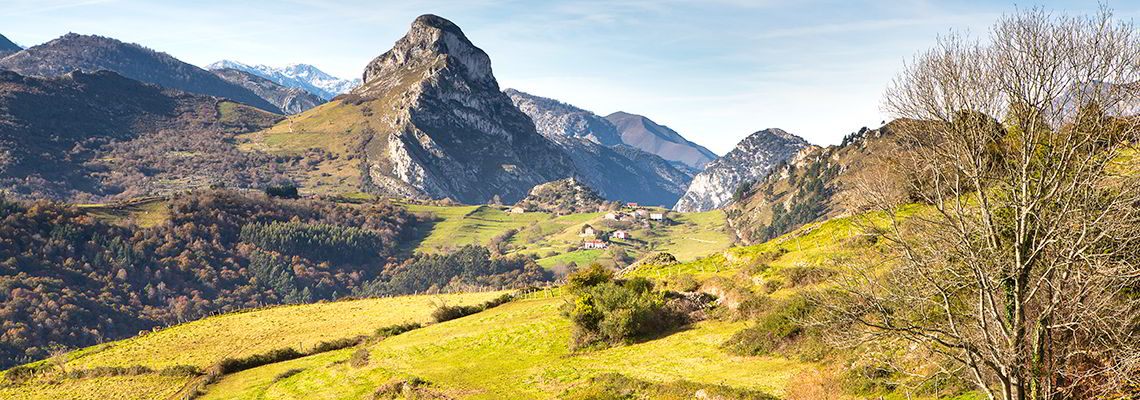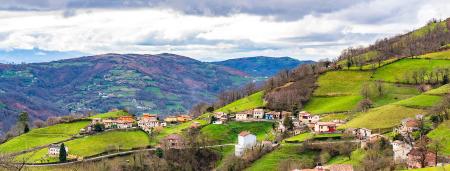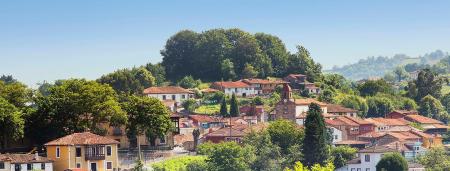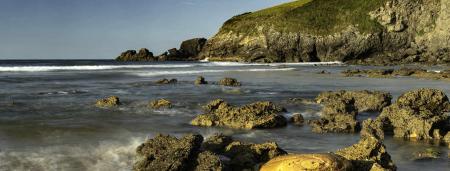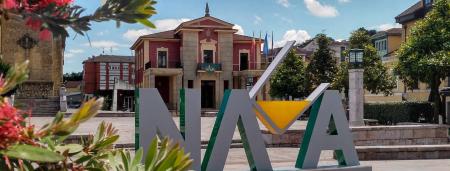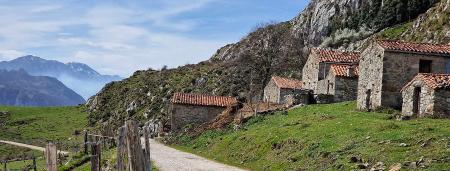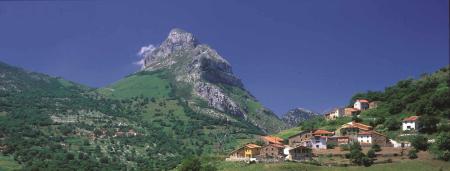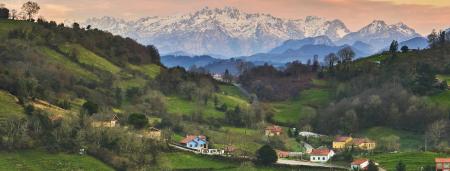Cider-tourism is a term that makes complete sense in the councils of the Cider Region, particularly in Villaviciosa and Nava, the capitals of cider and apples. Together with these, Cabranes, Bimenes, Colunga and Sariego. In Villaviciosa, among other things, there is plenty of Pre-Romanesque and Romanesque art, together with routes and the Way of Saint James, which passes through the council. It has a beautiful river, where it is an absolute pleasure to watch the sunset from the Puntal or on the Bonhome beach.
And also discover the history of jet, looking for mills next to the Profundu River or, even, take a wander through Sietes, a small hamlet with a large number of hórreos and paneras. It is also worth taking a stroll through Villa.
Visitors simply have to take a stroll through the small streets of the Port of Tazones, pure seamanship.

It is also worth taking a stroll through Villa. In the other cider council, Nava, nature lovers will find picturesque places such as La Praera, or villages such as Piloñeta or Grátila, together with the Pendón River gorge and the Remediu route. Food enthusiasts should visit Cabranes, which hosts the famous Rice Pudding Festival and, while there, if the chance arises, they should visit villages such as Santolaya, its capital or Torazu. The Rural School Museum in Viñón, is also well-worth a visit.
Lovely villages and great landscapes can also be found in Sariego and in Bimenes. The former is home to the Santa María Church and the San Pedrín Chapel, next to the cave, and, of course, the Cercanías del Cielo route. In Bimenes, those that like dried cured meats, will find a large number of companies making traditional cured pork products. And radio enthusiasts must visit the Casa de las Radios (House of the Radios).


Colunga, and the entire coastal area from Villaviciosa, is a trove of dinosaur tracks; unsurprisingly, very close to the Llastres Port, in Rasa de San Telmo, is the Jurassic Museum of Asturias. Colunga, next to the sea, is as beautiful as the valley and mountains. Apart from its marvellous beaches, it is also worth discovering villages such as Güerres, Lloroñi, Llue, Lliberdón and Gobiendes. Lighthouse enthusiasts should visit the one in Lluces/Luces
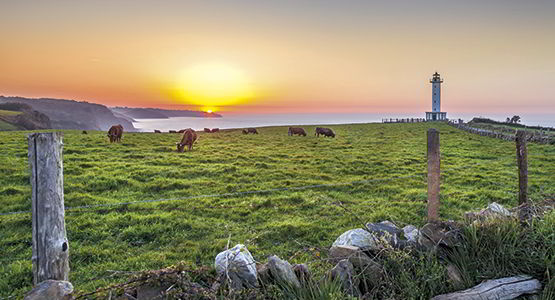
Travellers fall in love with Caravia, Ribadesella, Llanes and Ribadedeva not only for the sea, but also for the inland areas with gorgeous valleys, mountains and forests. It is easy to fall in love with beaches such as the Arenal de Morís and La Espasa.
The mountains offer other gems, the Sueve Mountain Range, covering various councils and crowned by the Picu Pienzu. And of course, the Fitu viewpoint.

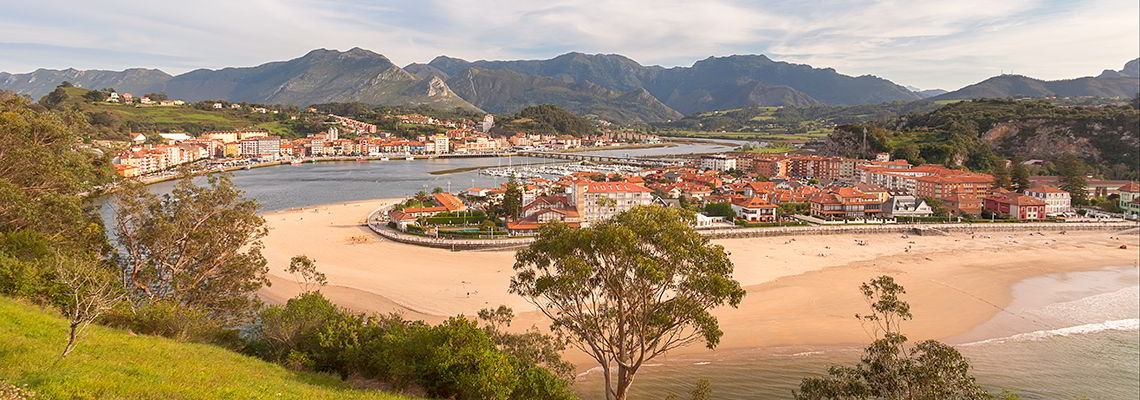
In terms of the history of the Indianos (Asturians who emigrated to America and returned with a fortune), this is reflected across the entire eastern area, through their architectural legacy. Ribadesella and Llanes are two clear examples. In Ribadesella/Ribeseya visitors can admire, for example, the seaside promenade of the Santa Marina Beach, and its historic town centre and places such as the market and even the port. In Ribadesella, essential visits include the Tito Bustillo Cave (Cave with cave paintings recognised by UNESO like World Heritage Sites) or beautiful villages such as Cueves.
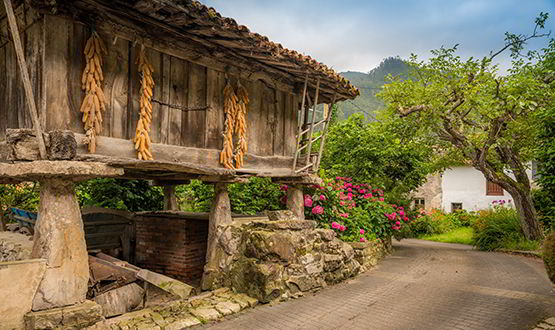
Llanes maintains the same beauty as the rest of eastern Asturias. Both in terms of the incredible quality of its beaches and coves and its inland landscapes. Simply beginning with the fishing village, which captivates visitors at first sight, and its entire historic quarters, going on to the villages and unique sites such as the famous Pría and Vidiago blowholes; the cemetery on the river between Barru and Niembru, or small villages such as Porrúa, Cue, Andrín, Po, Nueva, Rinsena, El Mazucu, Vidiago, Buelna, Valmori, Niembru and Pendueles.

The history of the Pimiango shoemakers is well-known in Ribadedeva. The San Emeterio Sanctuary and the ruins of the Tina Monastery are also worth visiting.
Colombres, its capital, also reflects the influence of the Indianos in the many mansions and palaces that remain there.

The most important is "La Quinta Guadalupe", which is home to the Indianos Archive and the Museum of Emigration. And, once in Alles, the capital of Peñamellera Alta, an essential visit is to its San Pedro Church, in the centre of the village, and the restored remains of the old San Pedro de Plecín Church, which are located in a magical spot. In Trescares is the beautiful La Vidre Bridge, while a pretty winding road, offering spectacular views, leads to the village of Oceño, where visitors can also buy Cabrales cheese. Peñamellera Baja, with is capital Panes, offers natural monuments such as the willow plantation Sauceda de Buelles, singular villages such as Cuñaba and monuments like the San Juan de Ciliergo Church. A visit to the Loja Cave, with its Palaeolithic art, should also be included in everyone's diary.
